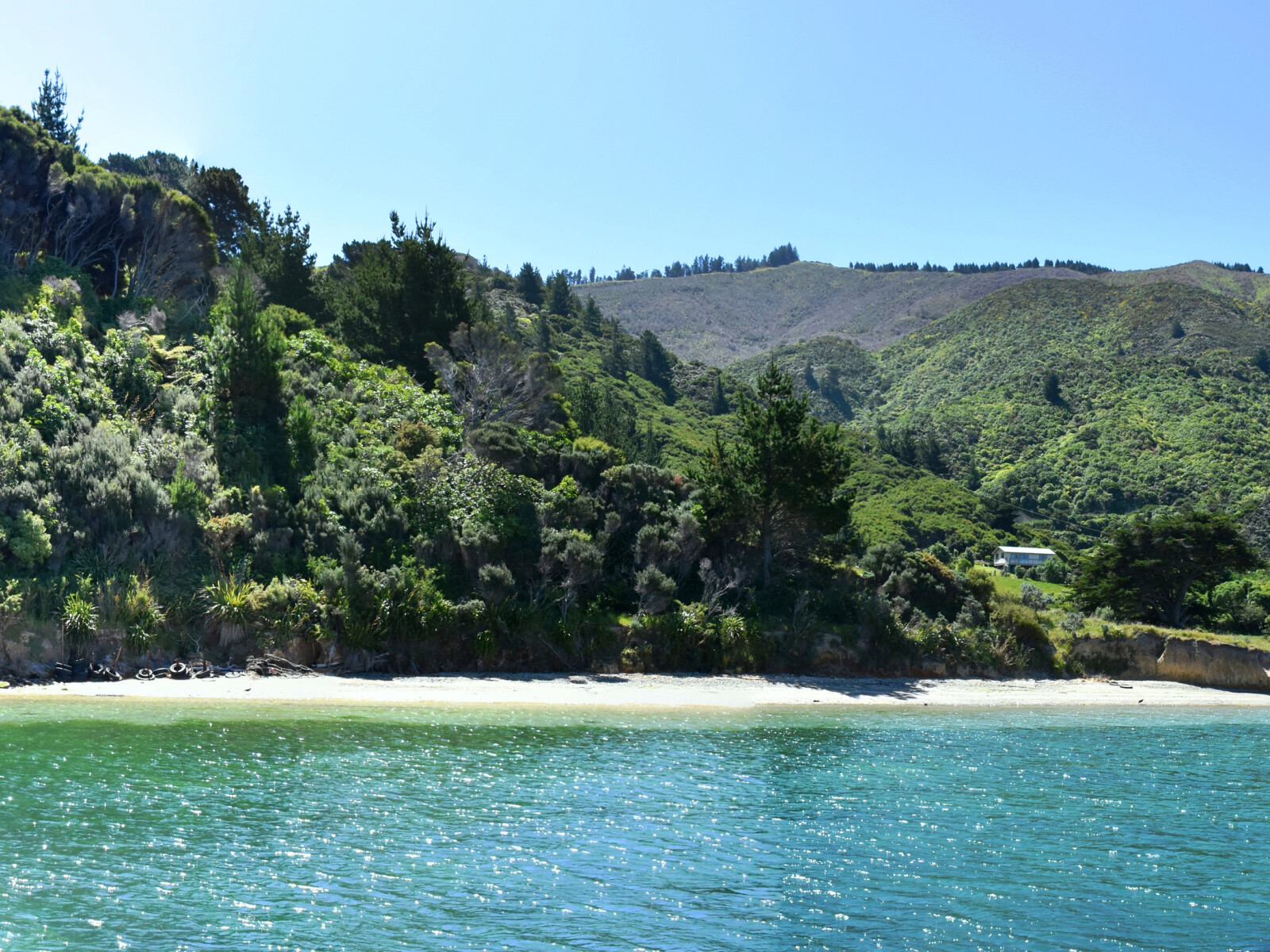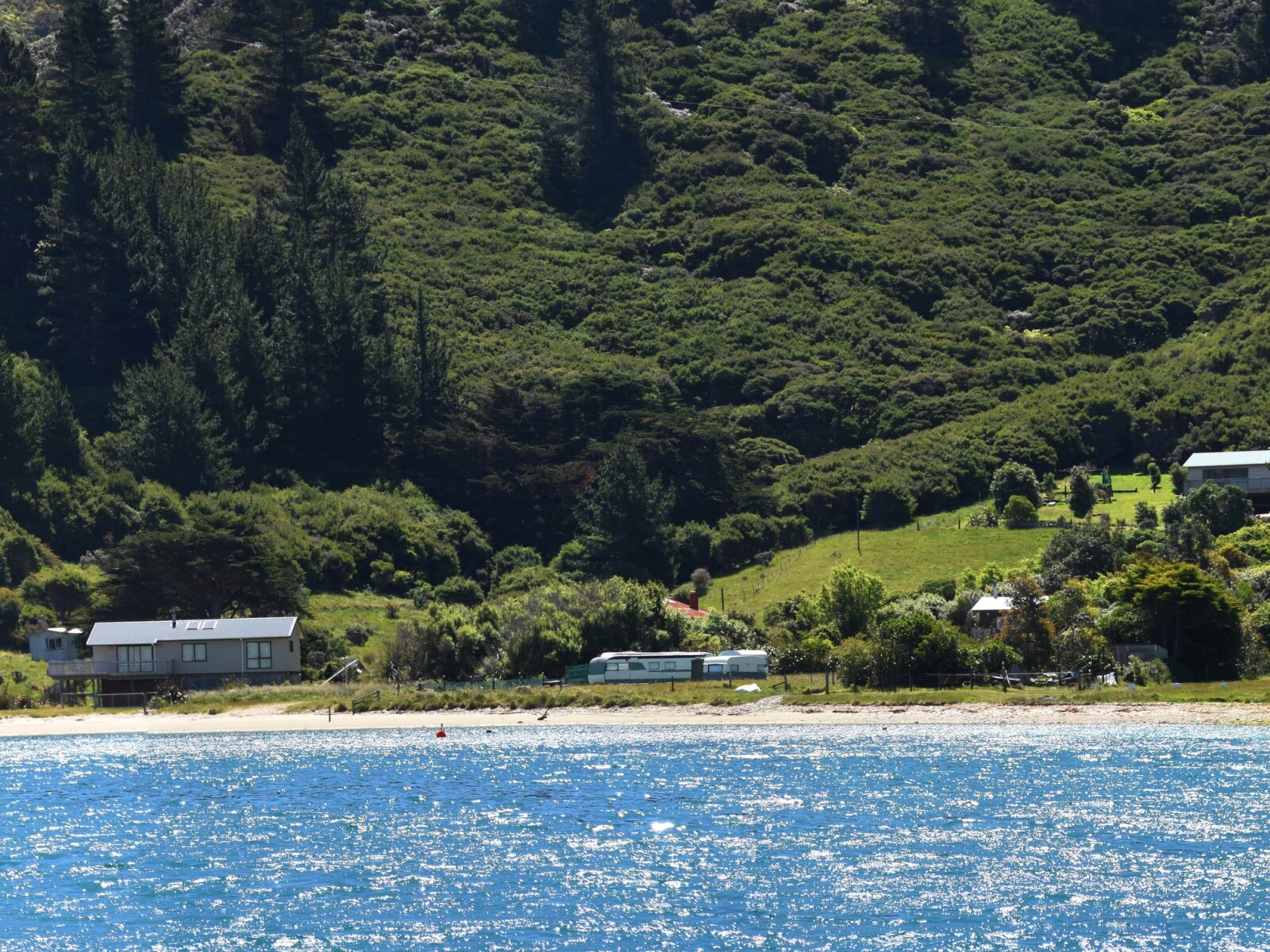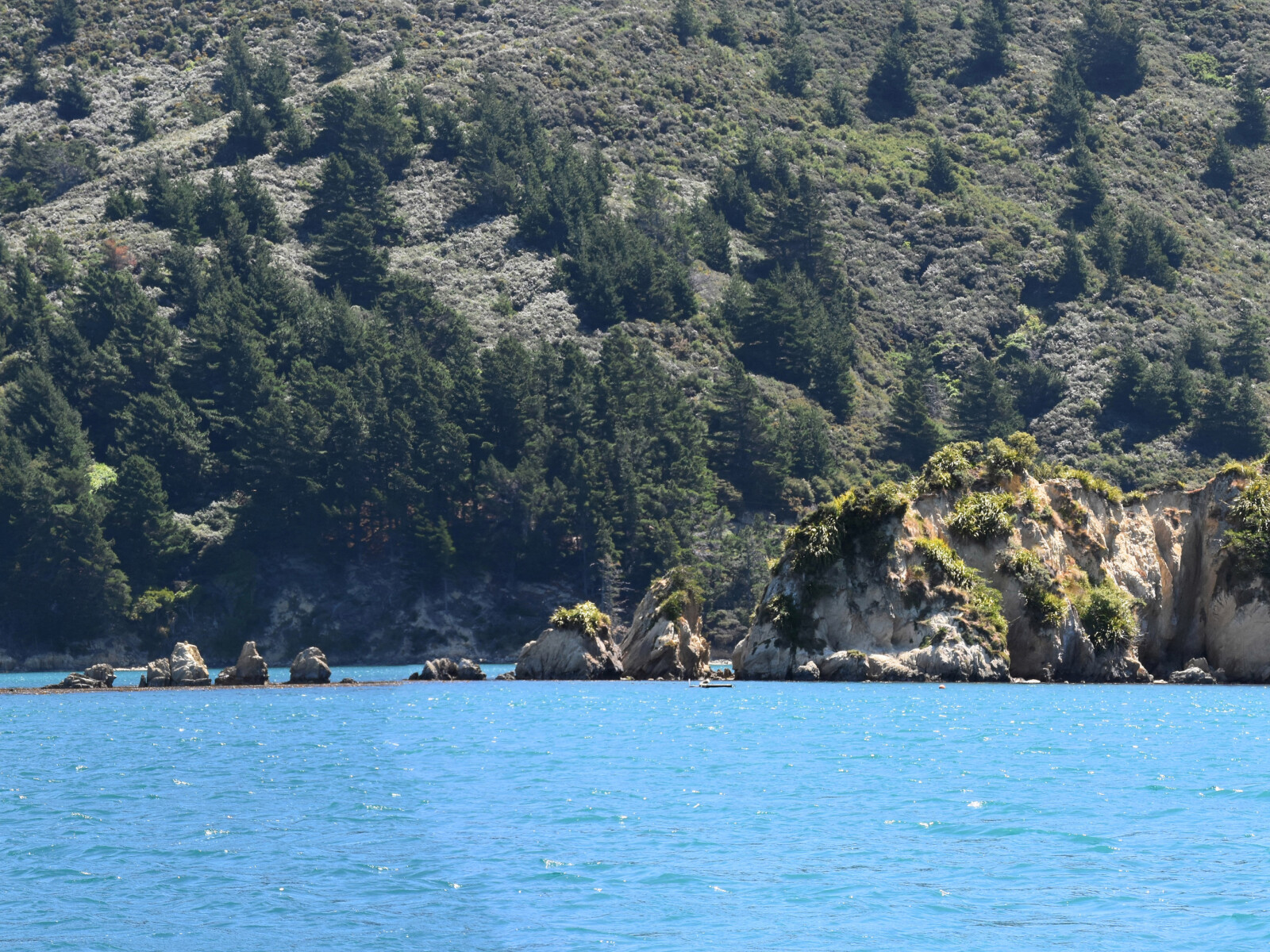Te Awaiti means, little river. The bay is named for the creek in its middle.
The bay has been used by Māori, including Te Ātiawa o Te Waka-a-Māui and Ngāti Toa Rangatira for many generations. Te Awaiti provided a central point for repairs and maintenance of waka and was a site for urupā or burial grounds.1
Europeans first utilised the bay around 1827, when Jacky Guard was blown into the entrance of the Tory Channel. Legend has it that Guard climbed a nearby hill and saw two right whales passing along the coast. A sealer by trade, Guard quickly recognised the value of the area for whaling.
Guard named the bay Fair Haven but it was quickly abandoned in favour of the original Māori name, which was pronounced ‘Tarwhite’ by the whalers.
By 1829 Guard returned with a crew of men and established what is considered to be one of the first shore whaling stations in New Zealand. The bay was well appointed for settlement with deep water, ample timber for huts and in close proximity to the open sea.2
In 1839, the New Zealand Company ship, the Tory, visited Te Awaiti Bay. The journals of those on board recorded details of the whaling station. They noted the carcasses of dead whales littering the beach waiting to be stripped of blubber. The bones, skulls and ribs of whales that had been processed sitting discarded and the piles of blubber waiting to go to the large cast-iron trypots for boiling. The area stunk of oil and the sand was soaked with it. Beyond the beach lay the houses of the whalers. There were 20 houses in total, constructed primarily of wattle and daub, with narrow slits for windows and thatched roofs.3
Te Awaiti was a busy, thriving community during the 1830s and early 1840s. There were around 100 people living in the bay, including Māori, Europeans and Americans. Several of the European whalers married local women and raised families in the bay and in 1842 a mission school was established by the Reverend Samuel Ironside.4
Many of the founding personalities of the Marlborough Sounds whaling industry are associated with the bay including Jacky Guard, Dicky Barrett, Joseph Toms, Jimmy Jackson and Arthur Elmslie.5
Sketch by John Wallis Barnicoat,‘Taiwaite. March 22 1843’, 1843, pencil on two sheets of paper.
Hocken Collections, Uare Taoka o Hākena, University of Otago. Reference: 94/245a & b.

John Wallis Barnicoat, 1814-1905,‘Taiwaite. March 22 1843’, 1843, pencil on two sheets of paper forming: 92 x 222mm, 94/245a & b, purchased with the assistance of the University of Otago Heritage Fund and Hocken Library Endowment funds, Hocken Collections, Uare Taoka o Hākena, University of Otago.
Te Awaiti and the whaling industry played a major role in early cultural contact between Māori and Europeans. Whalers depended on Māori for food, wives, boat crews, and protection, while Māori gained access to new commercial and industrial opportunities.
In the mid to late 1830s, whaling was New Zealand's major commercial industry in terms of value generated and people employed. Production peaked in the late 1830s and thereafter declined rapidly. By the mid-1840s most stations were closed and by 1850 shore whaling for right whales was virtually at an end.
In the early twentieth century the industry was revived in Tory Channel at nearby Fishermans Bay. Motor chasers, harpoon guns, and explosive heads were employed to hunt mostly humpback whales. Shore stations became sophisticated industrial plants, with steam and machinery taking over from human muscle.6
Whaling continued in the Marlborough Sounds until 1964. It was not until 1978 that whales became fully protected by New Zealand law.7
The whaling industry in the Marlborough Sounds initially targeted the southern right whale as the Cook Strait/Te Moana-o-Raukawa, is on its winter migratory path. The whale received its name due to the fact it is predictable and slow moving and floats when dead so can be relatively easily towed back to shore.
From an estimated population of 15,000 animals in the late 1790s, whaling led to the near-extinction of southern right whales in New Zealand waters. Even today, despite 80 years of full protection, the surviving New Zealand population numbers no more than 1000 individuals.8
Whalers made money by selling oil and baleen, the fine filtering tissue in the whale’s mouth, usually known as whalebone. Whale oil was clean burning and used for household and industrial lighting and lubrication. Baleen was used for corsets, combs and household ornaments.
There were two types of whaling operations in the Marlborough Sounds. Shore whalers lived on land and did their processing ashore, using big shear legs to haul the whales up the beach. Any ships belonging to their stations were supply ships to take processed oil to market in Sydney, Australia and bring back supplies and hardware.
The whaling stations in the Tory Channel, including Jacksons Bay and Te Awaiti, were shore based stations.
Bay whalers, were operations based in large whaling ships. Smaller oared pulling boats were sent out to capture whales and bring them back to the mother-ship which operated as a processing factory. These types of operations were based in Port Underwood, alongside shore based whaling stations.9
Tryworks at Te Awaiti Bay, Tory Channel, Marlborough Sounds 1890.
Feeney photograph Canterbury Museum. Reference: 19XX.2.4371.

Tryworks at Te Awaiti Bay, Tory Channel, Marlborough Sounds 1890.
Feeney photograph Canterbury Museum. Reference: 19XX.2.4371.
1. Marlborough District Council, Nelson City Council and Tasman District Council, “Te Tau Ihu Statutory Acknowledgements 2014”, accessed July 18, 2018, http://www.nelson.govt.nz/assets/Environment/Downloads/TeTauIhu-StatutoryAcknowledgements.pdf , 106, 149.
2. Carol Dawber, The Jacksons of Te Awaiti, (Picton, River Press, 2001) 14, 20, 34, 41, 56.
3. Oliver Sutherland, Arthur Elmslie Whaler and Gentleman and Anaru the Farm at French Pass (Nelson: Oliver Sutherland, 2006) 37, 38.
4. Dawber, ‘Jacksons of Te Awaiti’, 41, 56.
5. David A. Armstrong, “NZ King Salmon Plan Change: Heritage Report in Respect of Proposed Waitata Reach, Port Gore, Tory Channel and Queen Charlotte Sound Salmon Farm Sites” (NZ King Salmon, 2011), accessed, July 25, 2018, https://www.epa.govt.nz/assets/FileAPI/proposal/NSP000002/Applicants-proposal-documents/Appendix-17-Heritage-Report.pdf .
6. Nigel Prickett, "The Archaeology of New Zealand Shore Whaling" (Wellington: Department of Conservation, 2002), accessed September 12, 2018, https://www.doc.govt.nz/our-work/heritage/heritage-publications/the-archaeology-of-new-zealand-shore-whaling/ .
7. Jock Phillips, “Whaling”, Te Ara - the Encyclopedia of New Zealand, accessed October 30,018, http://www.TeAra.govt.nz/en/whaling .
8. “New Zealand's participation in commercial whaling”, Department of Conservation, accessed, October 30, 2018, https://www.doc.govt.nz/about-us/science-publications/conservation-publications/native-animals/marine-mammals/conservation-of-whales-in-the-21st-century/whaling-and-new-zealand/new-zealands-participation-in-commercial-whaling/ .
9. Dawber, ‘Jacksons of Te Awaiti’, 19-20.









